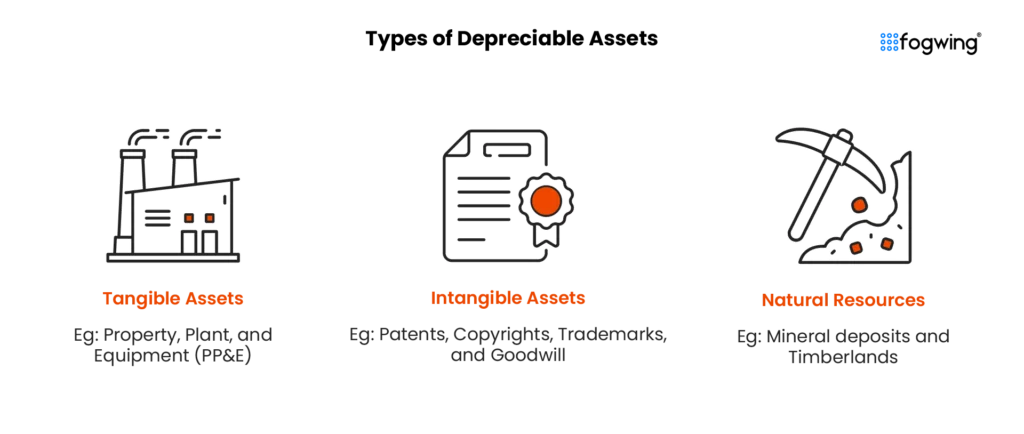Asset depreciation is crucial in determining the cost of owning and maintaining equipment and machinery in business finance. Whether you’re a maintenance manager or an asset manager at a large corporation, grasping the intricacies of asset depreciation is essential for making informed decisions about asset investments and financial planning.
What is Asset Depreciation?
Asset depreciation refers to the gradual reduction in the value of tangible assets over time due to wear and tear, obsolescence, or other factors. This reduction is recognized as an expense on the company’s income statement, spreading the asset’s cost over its useful life rather than expensing it all at once.
What are the different types of Asset Depreciation methods?
There are various methods to calculate depreciation, each suited to different types of assets and business needs:
1. Straight-Line Depreciation: This method evenly spreads the depreciation expense over the asset’s useful life. It’s straightforward and commonly used for assets that depreciate evenly over time.
2. Declining Balance Depreciation: Also known as accelerated depreciation, this method allocates higher depreciation expenses in the earlier years and lower expenses in later years. It’s beneficial for assets that lose more value in their earlier years.
3. Units of Production Depreciation: Ideal for assets where usage rather than time determines value loss, this method charges depreciation based on the asset’s output or usage.
Equipment Depreciation and Machine Depreciation
Understanding depreciation is especially critical for businesses heavily reliant on machinery and equipment. Equipment depreciation considers technological advancements and maintenance costs, while machine depreciation focuses on wear and tear from operational use. Both factors directly impact a company’s profitability and financial health over time.
Asset Cost of Ownership
Beyond initial purchase costs, the total cost of owning an asset includes depreciation, maintenance, insurance, taxes, and potential resale value. This comprehensive view, known as the asset cost of ownership, guides strategic decisions regarding asset acquisition, replacement, or divestment.
Strategic Implications
Accurate depreciation calculations provide valuable insights into the following:
- Financial Statements: Properly accounting for depreciation ensures accurate income statements and balance sheets that reflect true profitability and asset values.
- Tax Planning: Depreciation expenses are deductible on taxes, offering potential savings and influencing tax strategies.
- Asset Management: Understanding depreciation helps optimize asset lifecycles, identifying optimal times for repairs, upgrades, or replacements.
How to Calculate Depreciation on Fixed Assets?
Calculating depreciation on fixed assets involves applying specific methods to allocate the cost of an asset over its useful life. Here’s a step-by-step guide on how to perform this essential financial calculation:

1. Determine the Cost of the Asset
Begin by identifying the initial cost of the asset. This includes the purchase price and any expenses related to acquiring and preparing the asset for its intended use, such as shipping, installation, and legal fees.
2. Estimate the Useful Life of the Asset
Estimate how long the asset will be used in your business before it becomes obsolete, no longer functional, or less productive. The useful life can vary significantly depending on the type of asset and its intended use. When determining useful life, it’s essential to consider industry standards, technological advancements, and your specific operational needs.
3. Choose a Depreciation Method
Select a depreciation method that best suits the nature of the asset and your financial reporting needs. Common depreciation methods include:
- Straight-Line Depreciation: This method evenly spreads the depreciation expense over the asset’s useful life. It is straightforward and useful for assets that depreciate evenly over time.
FORMULA:
Annual Depreciation Expense= Cost of Asset − Residual Value / Useful Life
- Declining Balance Depreciation: Also known as accelerated depreciation, this method allocates higher depreciation expenses in the earlier years and lower expenses in later years. It’s beneficial for assets that lose more value in their earlier years.
FORMULA:
Annual Depreciation Expense=Book Value at Beginning of Year × Depreciation Rate
- Units of Production Depreciation: This method charges depreciation based on the asset’s output or usage. It’s ideal for assets where usage, rather than time, determines the value loss.
FORMULA:
Annual Depreciation Expense= Cost of Asset−Residual Value× Units Produced in the Year / total Units of Production
5. Record Depreciation Expense
Annually record the calculated depreciation expense in your financial records. This expense reduces the book value of the asset on the balance sheet. It is reflected in the income statement as an operating expense, thereby spreading the asset’s cost over its useful life.
6. Consider Residual Value and Salvage Value
Residual value (also known as salvage value) is the asset’s estimated value at the end of its useful life. When calculating depreciation, this value must be subtracted from the asset’s initial cost, as it represents the amount you expect to recover from the asset when you dispose of it.
7. Review and Adjust
Review your depreciation calculations regularly to ensure they accurately reflect the asset’s usage and market conditions. Adjust depreciation estimates if the asset’s useful life or residual value changes significantly due to operational or market factors.
By following these steps and understanding the nuances of depreciation methods, businesses can effectively manage their fixed assets, optimize tax strategies, and maintain accurate financial reporting. Depreciation is a financial necessity and a strategic tool for long-term asset management and business planning.
What Are Depreciable Assets?
Depreciable assets form a fundamental part of financial planning and accounting for businesses. Understanding what qualifies as depreciable assets and how depreciation impacts financial statements is crucial for maintaining accurate financial health and making informed business decisions.
Definition of Depreciable Assets
Depreciable assets are tangible assets a business owns and uses to generate revenue. These assets have a finite useful life and are subject to wear and tear, obsolescence, or loss of value over time. Depreciation is the systematic allocation of the cost of these assets over their useful lives as an expense on the income statement.
Types of Depreciable Assets

1. Property, Plant, and Equipment (PP&E): These are long-term tangible assets used in the production or supply of goods and services, such as buildings, machinery, vehicles, and furniture. PP&E assets are typically subject to depreciation due to their extended use and eventual wear and tear.
2. Intangible Assets: Although not physical, certain intangible assets, such as patents, copyrights, trademarks, and goodwill, can also be depreciable. They are amortized (similar to depreciation for tangible assets) over their useful lives.
3. Natural Resources: Assets like mineral deposits and timberlands, depleted over time through extraction or use, are also subject to depreciation.
Criteria for Depreciation
To qualify for depreciation, an asset must meet several criteria:
- Tangible Nature: The asset must have a physical existence.
- Use in Business: It must be used in business operations to generate income.
- Limited Useful Life: The asset should have a determinable useful life, which will eventually wear out, become obsolete, or lose value.
Importance of Depreciable Assets
Depreciation serves several crucial purposes in business:
- Accurate Financial Reporting: Depreciation expense spreads the cost of assets over their useful lives, reflecting the gradual consumption of these assets’ value on financial statements.
- Tax Benefits: Depreciation expense is deductible on tax returns, reducing taxable income and potentially lowering tax liabilities.
- Asset Management: By tracking depreciation, businesses can assess the ongoing value and condition of their assets, aiding in decisions about repairs, upgrades, or replacements.
Conclusion
In essence, asset depreciation is more than just a financial concept—it’s a strategic tool that empowers businesses to manage resources efficiently and plan for the future. By incorporating depreciation considerations into financial planning, businesses can navigate economic fluctuations, optimize operational efficiency, and maintain competitive advantage in their respective markets.
Whether you’re evaluating the lifespan of a piece of machinery or planning long-term capital investments, a solid understanding of asset depreciation ensures informed decision-making and sustainable business growth. Embrace depreciation as a cornerstone of financial strategy, and your business will reap the rewards of prudent financial management and foresight.





